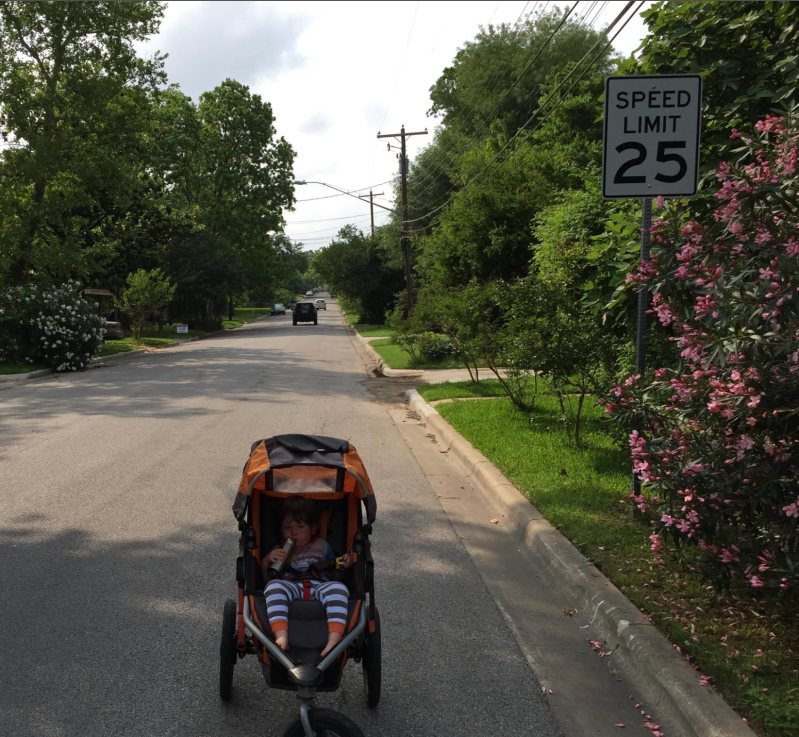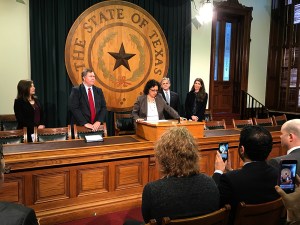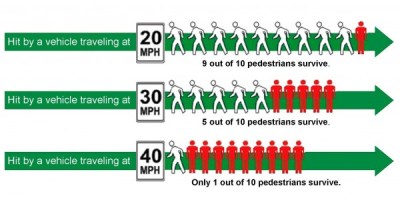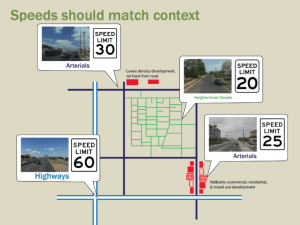Why Texas Cities Need Lower Speed Limits for Safe Neighborhood Streets

I’ve spent part of every week for the last three years researching, experimenting, and advocating for allowing Texas cities more leeway to design safer neighborhood streets. This legislative session, there are three different safe neighborhood streets bills in the Texas House and Senate — and a real breakthrough is within reach.
Together these bills would reset the default speed limit on residential streets from 30 to 25 mph, and make it easier for cities to try out 20 mph streets as well.
All over Texas, there are fortunate neighborhoods that enjoy the benefits of 25 mph neighborhood streets. We’ve all experienced them. But cities are only allowed to deploy these lower speed limits where they have conducted a study to show it is needed for safety, placed signs on both ends of the block, and have the capability to manage the cumbersome reporting requirements.
To me, allowing cities to respond to neighborhoods desperate for safer streets is an obvious good policy choice. But why do we have to lower the speed limit to make streets safe? Isn’t this just a trap to write more tickets?
These are legitimate concerns. Thus, I support changing the design of streets to match the speed limits we desire. And this is why I was so happy when someone recently sent me this section of the TXDOT Procedures for Establishing Speed Zones. I knew this was the conceptual basis of all of my work, but had never found it documented in writing by the state of Texas:
New or reconstructed roadways (and roadway sections) should be designed to accommodate operating speeds consistent with the roadway’s highest anticipated posted speed limit based on the roadway’s initial or ultimate function.
These 31 words are the reason every Texas legislator can embrace the safe neighborhood streets bills. This is why we must allow our cities to use 20 mph speed limits on residential streets. To whatever extent the legislature limits the ability of cities to set lower speed limits, they are limiting the ability of Texas engineers to design for safer driving speeds.
Texas has the best engineers in the world. We’ve built more bridges than any other state. We built the Astrodome. We’ve been to the moon, walked on it, and come back home.
And our engineers know how to follow instructions.
We keep building new streets all across Texas, and our engineers keep following the instructions of these 31 words. They know that the default speed limit for residential neighborhood streets is 30 mph, so they design the streets to accommodate a minimum of driving speeds of 30 mph.
In fact, many cities, counties, and TXDOT often ask their engineers to design streets and roads to accommodate speeds well above the speed limit, which the agency considers good practice because it purportedly leads to road designs that can handle the bad apples who are going to drive too fast. Yet designing roads for high speeds also leads the typical driver to go faster. That’s why the City of Houston ended the practice of designing all roads for high speeds with a 2015 change to its Infrastructure Design Manual that instructs engineers to design for the posted speed limit.
Houston’s policy change was an improvement step, but it’s not enough. When a driver traveling at 30 mph hits someone, that person has a 60 percent chance of survival. But at 20 mph, the survival rate is 95 percent, according to the National Highway Traffic Safety Administration.
Texas is suffering from an epidemic of traffic deaths, with more fatalities than any other state in the nation. We must empower the smartest engineers in the world with the ability to design neighborhood streets for driving speeds that won’t kill people. Twenty mph is plenty for our neighborhood streets.
Texas legislators face many moral choices this spring. A yes vote for SB 2103 and HB 1368 / SB 1244 is one of easy moral choices they can make to reduce the toll of traffic deaths and serious injuries across our state.



